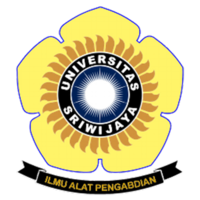Pemanfaatan POC Biourine Plus Pestisida Nabati untuk Meningkatkan Hasil Bawang Merah dalam Sistem Pengairan Leb dan Sprinkler di Lahan Kering Kabupaten Lombok Timur, NTB
Abstract
Sugianti T, Hadiawati L, Suriadi A, Sulistyawati Y. 2020. Utilization of POC Biourine plus natural pesticide to increase shallot yield under furrow and sprinkler irrigation of dryland east Lombok, NTB province. In: Herlinda S et al. (Eds.), Prosiding Seminar Nasional Lahan Suboptimal ke-8 Tahun 2020, Palembang 20 Oktober 2020. pp. xx. Palembang: Penerbit & Percetakan Universitas Sriwijaya (UNSRI).
The use of local resources as fertilizers and naturalpesticides (pesnab) is one of the shallotcultivationpracticesthat were environmentally friendlyin dryland. This study aims to measure the increase in shallot yield by the application of Biourin liquid organic fertilizer (POC) mixed with naturalpesticides underthe sprinkler irrigation system. The field experiment was carried outatSandubayadryland (46 masl)ofPringgabaya District, East Lombok Regency, West Nusa Tenggara (NTB) from June to November 2018. The experiment used a factorial randomized block design with two factors and three replications. The first factor wasof shallotsgrown in the furrowirrigation system (A) and the sprinkler irrigation system (B). The second factor was the spraying of POC biourin plus soursop leaf extract (P1), POC biourin plus neem leaf extract (P2), POC biourin plus tobacco leaf extract (P3), POC biourin without extract as a control (P0). The results of the experiment showed that the effect of the treatment’s interaction weresignificantly different on the parameters of plant height at 20 and 60 days after planting (DAP), plant’sfresh weight, sundried weight loss, and shallot bulb’sseed weight. The fresh weight of shallots was higher in the sprinkler irrigation system (3.27 kg / m2) than in the furrowirrigation system (2.70 kg / m2). The highest dry weight of shallots was obtained in the application of POC biourin plus soursop leaf extract in the sprinkler irrigation system at 1.79 kg/m2whichwas 37.99% highercompared to the control.
The use of local resources as fertilizers and naturalpesticides (pesnab) is one of the shallotcultivationpracticesthat were environmentally friendlyin dryland. This study aims to measure the increase in shallot yield by the application of Biourin liquid organic fertilizer (POC) mixed with naturalpesticides underthe sprinkler irrigation system. The field experiment was carried outatSandubayadryland (46 masl)ofPringgabaya District, East Lombok Regency, West Nusa Tenggara (NTB) from June to November 2018. The experiment used a factorial randomized block design with two factors and three replications. The first factor wasof shallotsgrown in the furrowirrigation system (A) and the sprinkler irrigation system (B). The second factor was the spraying of POC biourin plus soursop leaf extract (P1), POC biourin plus neem leaf extract (P2), POC biourin plus tobacco leaf extract (P3), POC biourin without extract as a control (P0). The results of the experiment showed that the effect of the treatment’s interaction weresignificantly different on the parameters of plant height at 20 and 60 days after planting (DAP), plant’sfresh weight, sundried weight loss, and shallot bulb’sseed weight. The fresh weight of shallots was higher in the sprinkler irrigation system (3.27 kg / m2) than in the furrowirrigation system (2.70 kg / m2). The highest dry weight of shallots was obtained in the application of POC biourin plus soursop leaf extract in the sprinkler irrigation system at 1.79 kg/m2whichwas 37.99% highercompared to the control.
Keywords
shallots, POC plusnatural pesticides, sprinklers, dryland
Full Text:
PDFArticle Metrics
Abstract view : 530 timesPDF - 963 times
Refbacks
- There are currently no refbacks.

